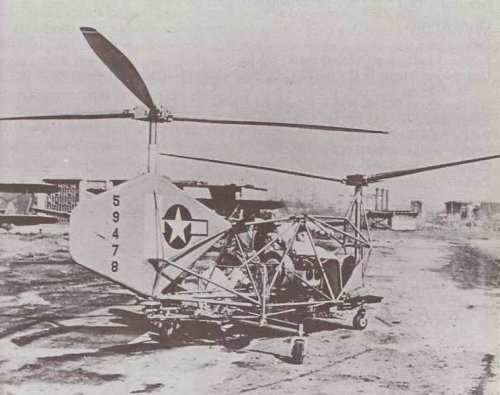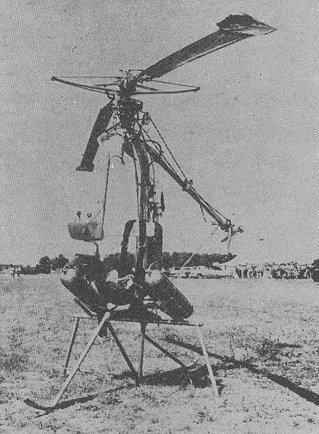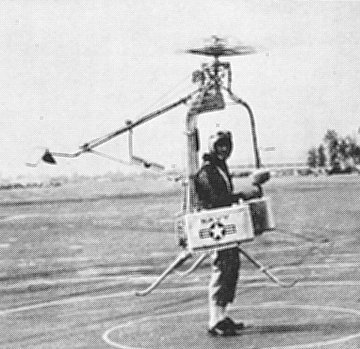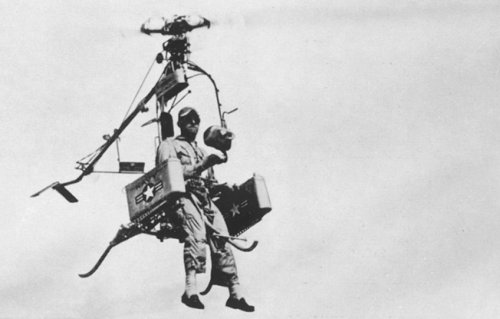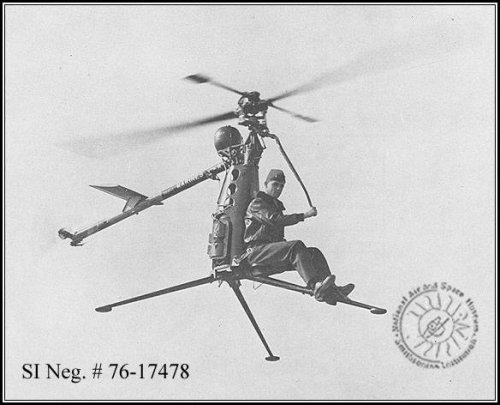EEP1A
ACCESS: Restricted
- Joined
- 27 November 2006
- Messages
- 36
- Reaction score
- 11
This posting is regarding the Rotorcraft XR-11 (XH-11).
Attached picture is the only photo I could find. (Source: ‘Military Helicopters of the World’ by Norman Polmer and Floyd D. Kennedy, Jr., Arms and Armour Press, 1981)
There is one illustration of this helicopter at <a href="http://www.nasm.si.edu/research/arch/collections/ufo_past.cfm">Smithonian web site.</a>
One Rotorcraft XR-11 was built for evaluation by the USAAF. The helicopter had contra-rotating, intermeshing rotor blades with the hubs of the three-bladed rotors 12 feet 4 inches apart. It had a welded steel tubular construction with fabric covering.
Built around 1945-46, the helicopter had 1 pilot, 1 observer, one Continental A-100 (O-188?) of 100hp, length 15”, height 7”2’, empty weight 900lb, gross weight 1350lb. (Source; ‘Military Helicopters of the World’ etc.)
Soon the designation of the helicopter was changed to XH-11 but the project was cancelled.
From the photo you can read the serial number at the tail to be “59478” and the above mentioned book describe that the serial number of the helicopter was 45-9478.
But I think there is a possibility that the number was 45-59478 because there were many examples that the complete fiscal year were omitted from the number written at the plane. Unfortunately the official serial number document lists both as cancelled.
I would greatly appreciate any additional drawing, photo or illustration of this project and information regarding the serial number.
Attached picture is the only photo I could find. (Source: ‘Military Helicopters of the World’ by Norman Polmer and Floyd D. Kennedy, Jr., Arms and Armour Press, 1981)
There is one illustration of this helicopter at <a href="http://www.nasm.si.edu/research/arch/collections/ufo_past.cfm">Smithonian web site.</a>
One Rotorcraft XR-11 was built for evaluation by the USAAF. The helicopter had contra-rotating, intermeshing rotor blades with the hubs of the three-bladed rotors 12 feet 4 inches apart. It had a welded steel tubular construction with fabric covering.
Built around 1945-46, the helicopter had 1 pilot, 1 observer, one Continental A-100 (O-188?) of 100hp, length 15”, height 7”2’, empty weight 900lb, gross weight 1350lb. (Source; ‘Military Helicopters of the World’ etc.)
Soon the designation of the helicopter was changed to XH-11 but the project was cancelled.
From the photo you can read the serial number at the tail to be “59478” and the above mentioned book describe that the serial number of the helicopter was 45-9478.
But I think there is a possibility that the number was 45-59478 because there were many examples that the complete fiscal year were omitted from the number written at the plane. Unfortunately the official serial number document lists both as cancelled.
I would greatly appreciate any additional drawing, photo or illustration of this project and information regarding the serial number.

